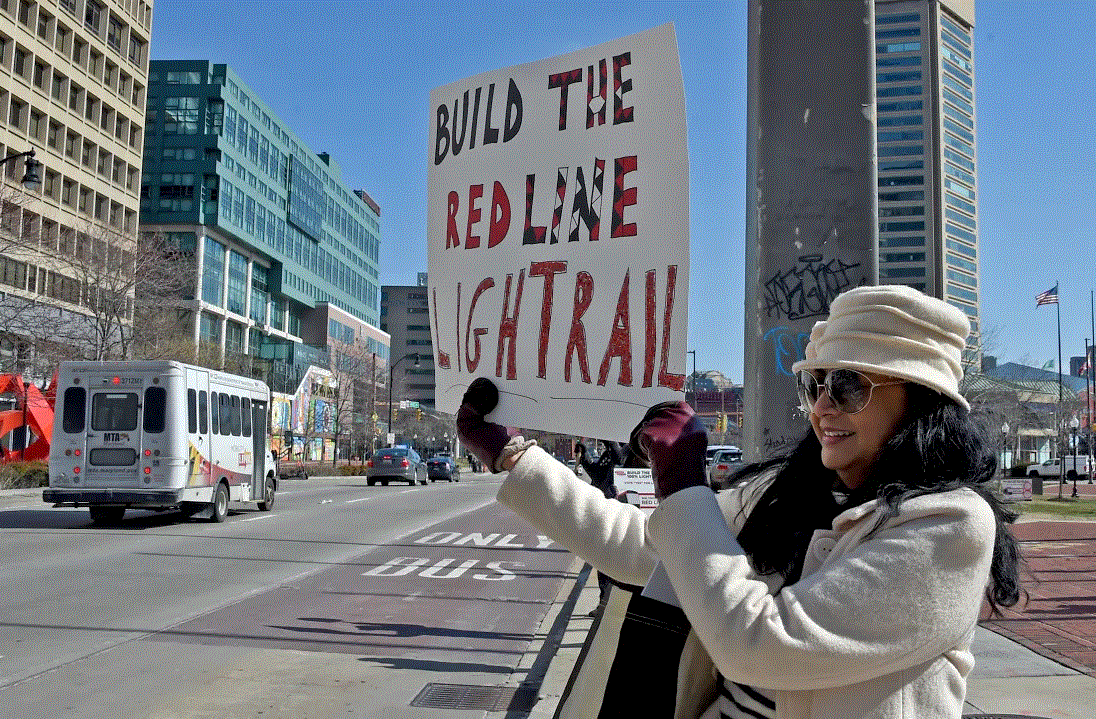
Jovita Hertzberg of Baltimore holds a sign last month on Pratt Street as part of the Baltimore Transit Equity Coalition’s rally at McKeldin Square downtown in support of the light rail Red Line. (Barbara Haddock Taylor/Staff)
Building the Red Line is a poor use of taxpayer funds
Originally published in the Baltimore Sun
Despite high construction costs and limited ridership prospects, the Maryland Transportation Administration (MTA) is plowing ahead with the Red Line which would connect Woodlawn and Bayview via central Baltimore. At a time of renewed state budgetary pressure, building the Red Line appears to be an unwise use of taxpayer funds.
Under Gov. Martin O’Malley, the MTA won a federal commitment to provide $900 million in grant funding toward the project’s $3 billion estimated cost. But, in 2015, his successor Larry Hogan canceled the Red Line project, declining the federal grant. Hogan later defended that decision, telling a reporter “Everybody in that transportation department said that project made no sense whatsoever.”
During the O’Malley era, the new line was expected to transport 16.4 million passengers annually or 47,700 on a typical weekday. This high volume of passengers is more suitable to high-capacity trains, and so light rail appeared to be the most appropriate solution.
But rail systems are expensive to build and can often run many years behind schedule. Just ask residents of Honolulu, who expected their 20-mile Skyline to be completed in 2020 at a cost of $4.8 billion. Instead, a truncated system is now expected to be fully operational in 2031, at a cost of $9.9 billion. Closer to home, MTA’s Purple Line in the northern D.C. suburbs is also running above budget and behind schedule, with the service inception date recently postponed to 2027.
Read the full article here






